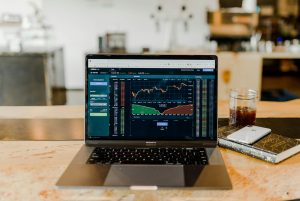What’s the difference between quantitative easing and open market operations?

Central banks wield a range of tools to steer the economic ship, ensuring inflation is kept in check while promoting stability and growth. Among these tools, quantitative easing (QE) and open market operations (OMOs) stand out, each serving distinct roles and purposes. While both involve the buying and selling of government securities to control the money supply, they differ significantly in scale, execution, and intent. These differences are pivotal in understanding how central banks, like the Federal Reserve, manage economic conditions, especially during turbulent financial times.
Delving Deeper into Quantitative Easing (QE)
Quantitative easing is not your run-of-the-mill monetary policy tool. It’s the fire extinguisher behind the glass, brought out when traditional methods, such as adjusting interest rates, have run their course. QE steps in when the economy is floundering, and the usual levers aren’t moving the needle.
Key Features of Quantitative Easing
Scale and Intensity: QE involves a commitment to buy assets on a massive scale, injecting a substantial amount of liquidity into the financial system. For instance, during the height of the COVID-19 pandemic, the Federal Reserve purchased over $3 trillion in assets within a few months—an unprecedented scale aimed at stabilizing markets and supporting economic recovery.
Purpose: The primary mission of QE is to lower long-term interest rates and encourage borrowing and investment when short-term rates approach the “zero lower bound.” This scenario often leaves central banks with fewer traditional tools, necessitating more aggressive measures.
Assets Purchased: Beyond government bonds, QE can extend to mortgage-backed securities, corporate bonds, and even municipal bonds. This variety allows central banks to target specific sectors, such as housing or corporate finance, which may require more direct support.
Impact on Long-Term Rates: By driving up the prices of these assets, QE effectively lowers their yields. This, in turn, reduces long-term interest rates, making borrowing cheaper for businesses and consumers, thereby fostering a conducive environment for investment and spending.
Effects and Outcomes of Quantitative Easing
Increased Liquidity: A direct consequence of QE is the flood of liquidity into the economy. Banks, now flush with cash, have more capacity to extend credit. This is crucial in periods of economic strain, where lending could otherwise dry up, exacerbating downturns.
Lower Long-Term Interest Rates: The ripple effect of lower yields on long-term securities is a broader reduction in interest rates across the economy. This translates to lower mortgage rates, more affordable loans for businesses, and generally cheaper credit for consumers.
Asset Price Inflation: As investors seek returns in a low-interest-rate environment, they often turn to equities and real estate, pushing up prices. While this can boost wealth and spending, it’s a double-edged sword, as soaring asset prices can lead to bubbles if not monitored carefully.
Real-World Application of Quantitative Easing
The 2008 financial crisis and the subsequent COVID-19 pandemic are textbook examples of QE in action. In both cases, central banks like the Federal Reserve stepped in with large-scale asset purchases to stabilize financial markets. By purchasing trillions in government securities and other assets, these institutions aimed to lower interest rates, support the housing market, and spur lending. The results were mixed but generally positive, with markets stabilizing and economies gradually recovering.
Understanding Open Market Operations (OMOs)
In contrast to QE, open market operations are the bread and butter of central bank activities. They are the daily or weekly adjustments that keep the economic engine running smoothly, ensuring that short-term interest rates remain within the target range set by policymakers.
Key Features of Open Market Operations
Regular and Routine: OMOs are conducted on a regular basis, a routine part of central bank operations to manage liquidity and steer short-term interest rates. This predictability helps anchor market expectations and provides stability.
Purpose: The primary aim of OMOs is to maintain the central bank’s target interest rate (such as the federal funds rate in the U.S.) by adjusting the money supply. This involves fine-tuning the amount of money in circulation to ensure the economy does not overheat or cool down too much.
Assets Traded: Typically, OMOs involve short-term government securities, like Treasury bills. These are the workhorses of monetary policy, easily traded and widely held, making them the ideal instrument for quick adjustments.
Impact on Short-Term Rates: By influencing the supply of reserves in the banking system, OMOs directly affect short-term interest rates. This impact then trickles through the economy, influencing various other rates and ultimately economic activity.
Types of Open Market Operations
Expansionary (Buying Securities): When the central bank buys government securities, it injects money into the banking system, increasing reserves. This typically lowers short-term interest rates, encouraging more borrowing and spending.
Contractionary (Selling Securities): Conversely, selling securities withdraws money from the system, reducing reserves. This can raise short-term interest rates, cooling borrowing and spending when inflationary pressures loom.
Real-Life Example of Open Market Operations
Consider a scenario where the Federal Reserve wants to lower the federal funds rate. It would enter the market to purchase government securities from banks. This action increases the banks’ reserves, enabling them to extend more credit, thereby lowering the interest rate through increased lending capacity. It’s a delicate balance, requiring constant monitoring and adjustment to keep the economy on an even keel.
Key Differences Between Quantitative Easing and Open Market Operations
Though both QE and OMOs involve the central bank’s buying and selling of government securities, the similarities largely end there. Their differences illuminate their distinct roles within monetary policy.
1. Scale and Scope
Quantitative Easing: QE is about big moves. It’s implemented on a large scale, aggressively boosting the money supply and lowering long-term interest rates, typically during economic crises.
Open Market Operations: OMOs are about precision. They involve routine, smaller transactions aimed at day-to-day management of short-term interest rates and liquidity.
2. Purpose and Timing
Quantitative Easing: This tool comes into play as a last resort, when traditional methods fail, often during times of severe economic distress when interest rates are near zero.
Open Market Operations: These are the regular tune-ups of the economic engine, used consistently to ensure short-term rates stay within the desired range.
3. Impact on Interest Rates
Quantitative Easing: Targets long-term interest rates by purchasing a broader range of assets, influencing everything from mortgage rates to corporate borrowing costs.
Open Market Operations: Focuses on short-term rates, particularly the overnight lending rate between banks, setting the stage for broader economic effects.
4. Asset Types
Quantitative Easing: Includes a diverse portfolio, from government bonds to mortgage-backed securities and corporate bonds, allowing for targeted economic interventions.
Open Market Operations: Concentrates on short-term government securities like Treasury bills, ideal for quick and effective adjustments.
5. Frequency and Duration
Quantitative Easing: Activated during crises, QE can last months or even years, depending on the economic recovery’s pace.
Open Market Operations: Happen frequently—daily or weekly—as part of the regular monetary policy toolkit.
How They Work Together
In times of economic stability, OMOs are the go-to tool for managing short-term interest rates. However, during a financial crisis, central banks may combine OMOs with QE to provide a more robust monetary stimulus. For example, while OMOs might ensure liquidity in the banking system, QE could lower borrowing costs across the board, supporting recovery efforts.
Expanding the Discussion: Economic Implications and Criticisms
Economic Implications
Both QE and OMOs have significant implications for the broader economy. By influencing interest rates and liquidity, they affect everything from consumer spending and business investment to inflation and exchange rates. For instance, a well-timed QE program can prevent deflation during a downturn, while effective OMOs can keep inflation in check during a boom.
Criticisms and Concerns
Despite their benefits, QE and OMOs are not without criticism. QE, for example, is often criticized for potentially creating asset bubbles, as low rates drive investors toward riskier assets. Additionally, QE can lead to currency depreciation, affecting international trade balances. On the other hand, OMOs, while routine, require precise execution to avoid unintended economic consequences, such as excessive inflation or stifled growth.
Practical Tips for Understanding QE and OMOs
- Stay Informed:
Regularly follow news from central banks, as changes in QE and OMO policies can significantly impact markets and personal finances.
- Diversify Investments:
Understand that both QE and OMOs can affect asset prices. Diversifying your investments can help mitigate risks associated with sudden policy shifts.
- Monitor Economic Indicators:
Pay attention to key indicators like inflation rates and GDP growth, which can provide clues about future central bank actions.
- Consult Financial Experts:
If in doubt, consult a financial advisor to understand how QE and OMOs might impact your investment strategy or borrowing costs.
Conclusion
Grasping the nuances of quantitative easing and open market operations is crucial for anyone interested in understanding monetary policy’s role in economic management. While QE is a powerful tool for combating severe downturns, OMOs are the steady hands guiding the economy through its daily ups and downs. Together, they form a comprehensive approach that allows central banks to navigate the complex landscape of modern economies, ensuring stability and growth.


